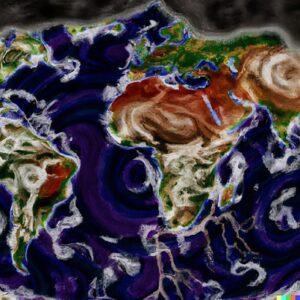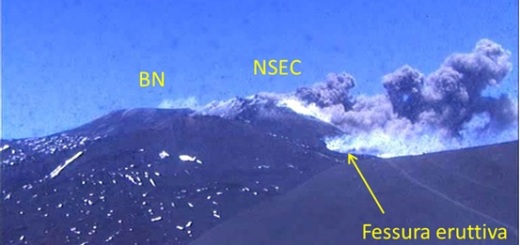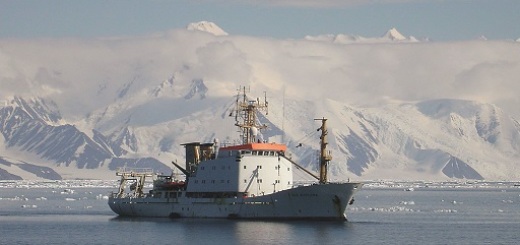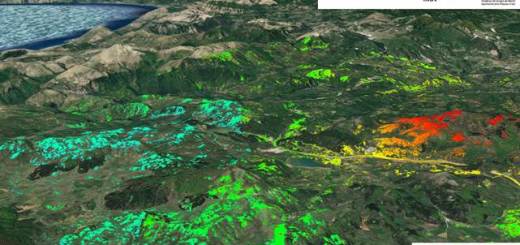Cambiamento climatico, innovativa piattaforma svela in tempo reale l’origine degli eventi estremi


Roma, 12 settembre 2023 – Mentre il mondo affronta le sfide crescenti del cambiamento climatico, un team internazionale di ricercatori ha lanciato una piattaforma all’avanguardia per affrontare direttamente una delle domande più pressanti: fino a che punto il cambiamento climatico modifica gli eventi meteorologici estremi?
Il recente rapporto del Gruppo Intergovernativo di esperti sul cambiamento climatico delle Nazioni Unite (Intergovernmental Panel on Climate Change – IPCC) ha sottolineato l’urgente necessità di affrontare il cambiamento climatico globale, evidenziando un’accelerazione dei fenomeni estremi e il loro impatto sugli ecosistemi vitali e sulla società.
In questa cornice, il team dei ricercatori dell’Istituto Nazionale di Geofisica e Vulcanologia (INGV), in collaborazione con il Centre National de la Recherche Scientifique (CNRS), l’Università svedese di Uppsala e il Centro Internazionale di Fisica Teorica Abdus Salam (ICTP) di Trieste, si è concentrato su alcuni eventi estremi avvenuti questa estate come la tempesta extratropicale Poly che ha colpito l’Europa centrale, l’eccezionale ondata di calore Cerberus che ha investito il Mediterraneo centrale e le intense precipitazioni di fine agosto sulle isole del Mediterraneo e nel Nord Italia.

“L’obiettivo principale del progetto è fornire una rapida analisi del ruolo del cambiamento climatico e della variabilità naturale in un evento estremo meteorologico, con un’attenzione particolare a specifici fenomeni quali cicloni, ondate di calore e intense precipitazioni – spiega Tommaso Alberti, ricercatore dell’INGV – Ciò permette di ottenere informazioni chiare e precise sulle influenze delle emissioni antropogeniche sull’evento estremo, offrendo una prospettiva rapida immediatamente dopo l’evento, nonché una descrizione e discussione più tecnica quando esso si è concluso”.
ClimaMeter, con una rappresentazione grafica, fornisce una visione chiara e dettagliata sull’origine naturale o antropica dell’evento estremo. In tal modo, si offre un tool facile da consultare per capire la dimensione spesso sottovalutata del cambiamento del clima.
“La piattaforma appena lanciata rappresenta un passo significativo verso una comprensione più profonda del legame tra il cambiamento climatico e gli eventi meteorologici estremi. Alimentiamo il database con eventi estremi avvenuti negli anni scorsi e contiamo di fornire, utilizzando dati in tempo reale di pressione alla superficie terrestre, velocità del vento, quantità di precipitazioni e temperatura, ottenute dal MSWX, un database con i parametri meteorologici ad alta risoluzione temporale, offrendo una base solida per analisi future e per le previsioni”, aggiunge il ricercatore.
“La nostra metodologia si basa sulla ricerca di condizioni meteorologiche simili a quelle che hanno causato l’evento estremo di interesse utilizzando i dati disponibili nella cosiddetta ‘era satellitare’, vale a dire il periodo a partire dal 1979 ovvero da quando sono diventate disponibili osservazioni diffuse delle variabili climatiche dai satelliti. Analizziamo separatamente i primi decenni dell’era satellitare (1979–2000, “passato”) e i decenni più recenti (2001–2022, “presente”) e, poi, li confrontiamo per capire come sono cambiate le condizioni meteorologiche selezionate tra i due periodi e se tali cambiamenti sono probabilmente dovuti alla variabilità climatica naturale o al cambiamento climatico antropogenico. Utilizzando dati storici e non simulazioni di modelli numerici, abbiamo la possibilità di avere il quadro rapido e riproducibile degli effetti”, prosegue Tommaso Alberti.
La piattaforma è raggiungibile all’indirizzo https://www.climameter.org/home dove vi sono informazioni dettagliate e intuitive a beneficio di tutti: comunità scientifica, professionisti dell’informazione, autorità istituzionali e cittadini.
“Nel futuro la piattaforma potrà essere utilizzata per fornire informazioni fondamentali per l’elaborazione delle strategie di mitigazione e l’adattamento agli effetti in continua evoluzione del cambiamento climatico”, conclude Alberti.
Studio: A climate-change attribution retrospective of some impactful weather extremes of 2021 su Weather and Climate Dynamics
*******
Climate change: ClimaMeter, the new tool that shows the origin of extreme events in real-time
ClimaMeter displays a clear and detailed illustration of whether the impact on the climate is caused by natural variability or anthropogenic effects
Rome, 12 September 2023 – As the world faces the growing challenges of climate change, an international team of researchers has launched a cutting-edge platform to directly tackle one of the most pressing questions: to what extent does climate change alter extreme weather events?
The recent report from the United Nations’ Intergovernmental Panel on Climate Change (IPCC) emphasized the urgent need to address global climate change. It highlighted the acceleration of extreme weather events and their impact on vital ecosystems and society.
In this context, the team of researchers at the National Institute of Geophysics and Volcanology (INGV), in collaboration with the Centre National de la Recherche Scientifique (CNRS), the Swedish University of Uppsala and the Abdus Salam International Centre for Theoretical Physics (ICTP) in Trieste focused on some extreme events that occurred this summer such as the extratropical storm Poly that hit central Europe, the exceptional heatwave Cerberus that hit the central Mediterranean and the intense rainfall at the end of August on Mediterranean islands and in northern Italy.
“The main aim of the project is to provide a quick analysis of the role of climate change and natural variability in extreme weather events, with particular attention to specific phenomena such as cyclones, heatwaves, and heavy rainfall – explains Tommaso Alberti, a researcher at INGV – This allows for clear and precise information on the impacts of human emissions on extreme events, offering a quick perspective immediately after the event, as well as a more technical description and discussion of the event once it has ended”.
ClimaMeter, with a graphical representation, provides a clear and detailed view of the natural or anthropogenic origin of the extreme event. This provides an easy-to-use tool for understanding the often underestimated dimension of climate change.
“The newly launched platform represents a significant step towards a deeper understanding of the link between climate change and extreme weather events. We will feed the database with extreme events that have occurred in the past years and we expect to offer, using real-time data of land surface pressure, wind speed, precipitation amount and temperature, obtained from the MSWX, a database with high temporal resolution weather parameters, a solid basis for future analysis and forecasting”, the researcher adds.
“Our methodology is based on the search for weather conditions analogues to those that caused the extreme event of interest using data available in the so-called ‘satellite era’, i.e. the period since 1979 or since widespread observations of climate variables from satellites became available. We analyse separately the early decades of the satellite era (1979-2000, ‘past’) and the more recent decades (2001-2022, ‘present’) and then compare them to understand how selected weather conditions have changed between the two periods and whether these changes are likely due to natural climate variability or anthropogenic climate change. By using historical data and not numerical model simulations, we can get a quick and reproducible picture of the effects”, Tommaso Alberti explains.
The platform can be reached at https://www.climameter.org/home where there is detailed and intuitive information for the benefit of everyone: the scientific community, information professionals, institutional authorities and citizens.
“In the future, the platform can be used to provide crucial information for the development of mitigation strategies and adaptation to the changing effects of climate change”, Alberti concludes.






































































